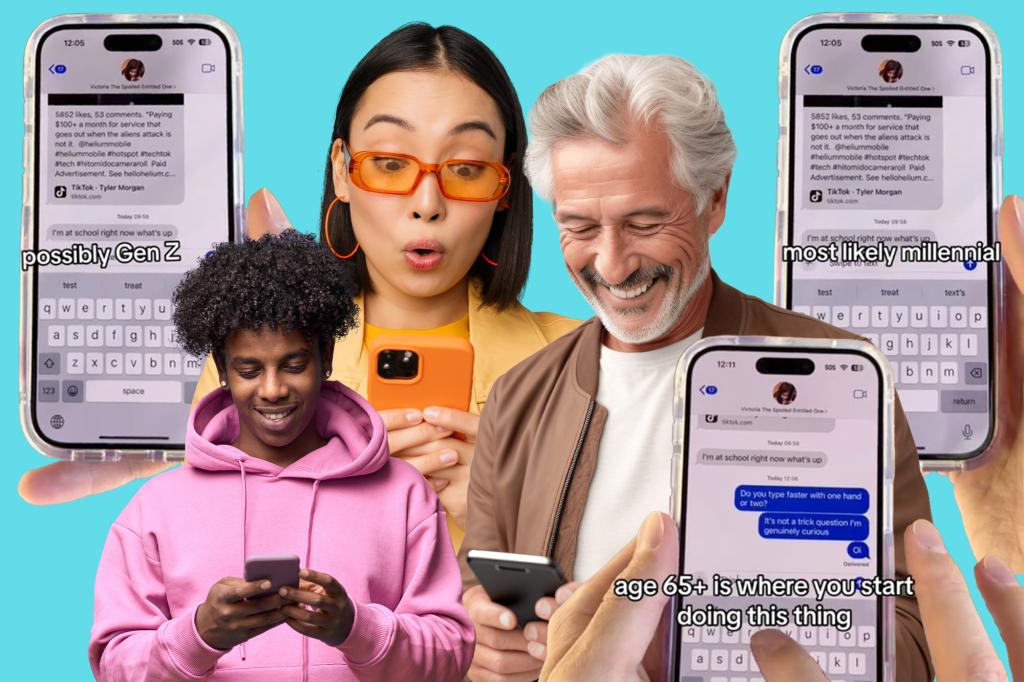Tech influencer Tyler Morgan claims that he can determine someone’s age based solely on how they text. In a TikTok video that garnered over 2.7 million views, Morgan explains the texting habits of boomers, millennials, and Generation Z. He points out that millennials are likely to use swipe to text, while Gen Z individuals can type accurately with one hand at a fast pace. Typing accurately with both thumbs is common among both millennials and Gen Z, with people typically transitioning to typing with a thumb and index finger in their 50s.
Morgan notes that baby boomers tend to poke the buttons with their pointer finger, indicating that they are older. He also mentions the horizontal typing method, which he finds impressive but not characteristic of any specific age group. The progression of texting technology may have influenced these typing habits, with phones like the Nokia 9000i Communicator and the Blackberry introducing different typing methods over the years.
In addition to typing techniques, the style of digital correspondence can also provide clues about a person’s age. Generation Z individuals believe that using proper punctuation and capital letters in texts is a sign that someone is older and out of touch. These cultural indicators, along with fashion and musical preferences, play a role in identifying someone’s generation based on digital behavior.
The video showcases how different generations have adapted to advancements in technology and communication devices. From older individuals using one finger to type on traditional phones to younger generations typing quickly with both thumbs on smartphones, each age group has developed its unique texting habits. The evolution of texting technology has shaped these habits and influenced how people of different ages engage with digital communication.
As technology continues to evolve and new forms of communication emerge, the ways in which people interact digitally will also change. Understanding the nuances of texting behavior across generations can provide insights into cultural differences and how technology impacts human behavior. By recognizing these patterns, individuals can better navigate communication with people of different ages and backgrounds in an increasingly connected world. The ability to interpret these cultural cues can lead to more effective and empathetic communication in both personal and professional settings.


